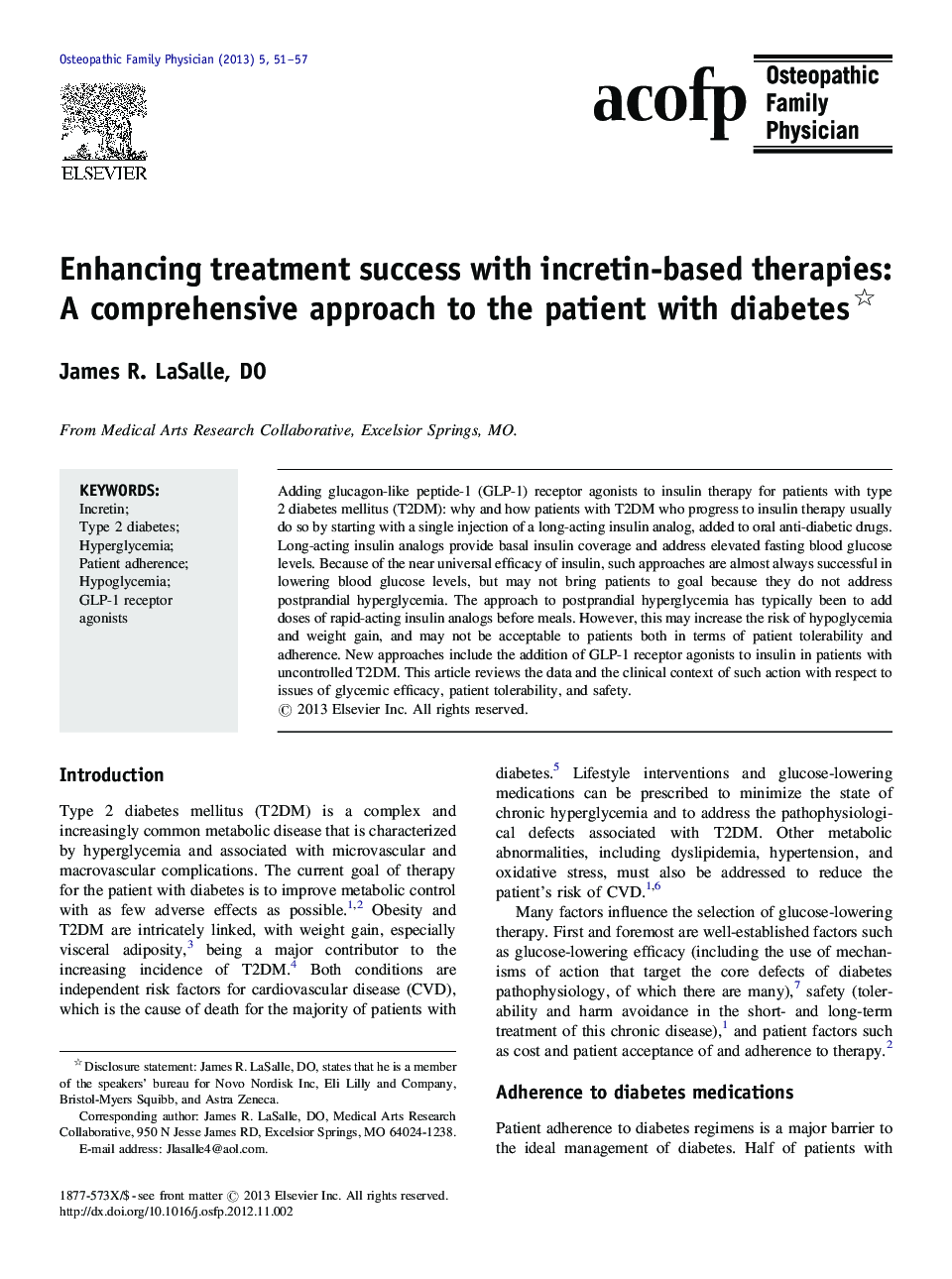| Article ID | Journal | Published Year | Pages | File Type |
|---|---|---|---|---|
| 3812745 | Osteopathic Family Physician | 2013 | 7 Pages |
Abstract
Adding glucagon-like peptide-1 (GLP-1) receptor agonists to insulin therapy for patients with type 2 diabetes mellitus (T2DM): why and how patients with T2DM who progress to insulin therapy usually do so by starting with a single injection of a long-acting insulin analog, added to oral anti-diabetic drugs. Long-acting insulin analogs provide basal insulin coverage and address elevated fasting blood glucose levels. Because of the near universal efficacy of insulin, such approaches are almost always successful in lowering blood glucose levels, but may not bring patients to goal because they do not address postprandial hyperglycemia. The approach to postprandial hyperglycemia has typically been to add doses of rapid-acting insulin analogs before meals. However, this may increase the risk of hypoglycemia and weight gain, and may not be acceptable to patients both in terms of patient tolerability and adherence. New approaches include the addition of GLP-1 receptor agonists to insulin in patients with uncontrolled T2DM. This article reviews the data and the clinical context of such action with respect to issues of glycemic efficacy, patient tolerability, and safety.
Related Topics
Health Sciences
Medicine and Dentistry
Medicine and Dentistry (General)
Authors
James R. DO,
